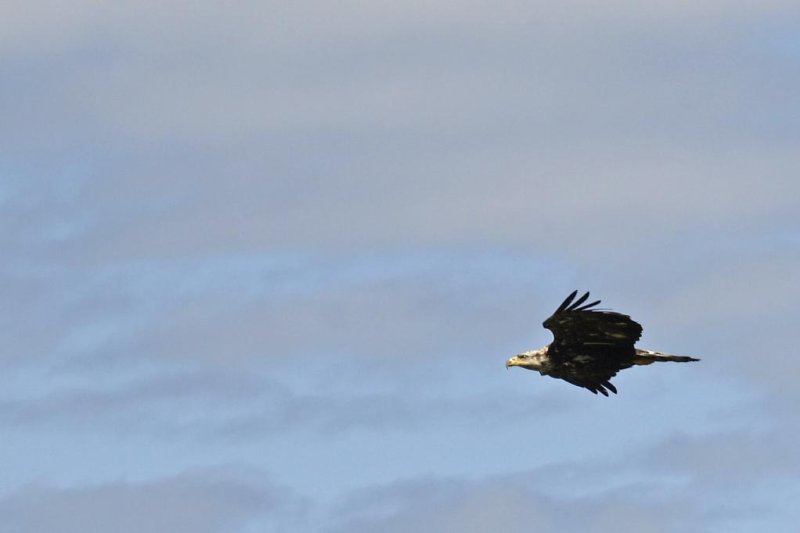Flexible wrists help eagles glide, according to a new study. Photo by
Pixabay/CC
Oct. 24 (UPI) -- An eagle's impressive ability to glide effortlessly through the air, riding thermals in big, graceful circles, is made possible by the bird's unique wrist motions, according to a new study.
Birds display similar flight patterns despite disparate morphologies. Many birds of different shapes and sizes can adeptly hover, for example, including hummingbirds, falcons, hawks, kingfishers and passerines.
Likewise, ravens can glide in a manner similar to eagles. Their close relative, the crow, uses a more pedestrian flying style, remaining close the ground.
Until now, scientists remained puzzled by the ability of unrelated birds to achieve similar flight patterns. It turns out, birds augment their flying style, not by adapting the size and shape of their wing, but by adjusting their range of motion.
"Birds essentially swim through the air -- they flex, extend and bend their wings in flight," Vikram Baliga, a researcher at the University of British Columbia, said in a news release. "As a bird specializes in a flight style, nature doesn't appear to reshape the size or shape of the wing as much as it remodels the wing's range of motion. Much like a swimmer adjusting their stroke."
When Baliga and his colleagues analyzed the anatomical structures and movements of hovering birds, they found all of them struggled to extend their elbows. The hovering species did, however, boast an impressive range of motion with their wrists.
"Hummingbirds basically tuck their elbows in and predominately rely on rapidly swinging their wings at the wrist joint," said Baliga. "For birds that glide, it's more about maintaining the position of the limbs to keep steady sail. The most restricted species in our study are the bald eagle and the sooty shearwater, both of which frequently soar and glide."
Baliga and his research partners detailed their analysis of the relationship between bird flight and range of motion in a paper published this week in the journal Science Advances.
For the study, researchers characterized the flying patterns of 61 different species, including the bald eagle, Haliaeetus leucocepalus, and sooty shearwater, Ardenna grisea. For each species, scientists also studied the shape, flexibility and extendibility of their wings. Finally, scientists plotted the data on an evolutionary tree to better understand how wing motion and flying styles evolve.
According to the study's authors, the ways different bird wings move during flight could inform how engineers design blades and airfoils used by drones and airplanes.
"We're working towards understanding how wings in nature morph during flight so that the knowledge can be applied to unmanned aerial vehicles -- particularly in turbulence, wind gusts, or when attacked by aerial predators," Baliga said. "Evolution has tested a range of wing designs and motions for specific circumstances. Looking at the restrictions that nature places on birds of different sizes and flight styles can help us understand what does and does not work when designing new technology."















